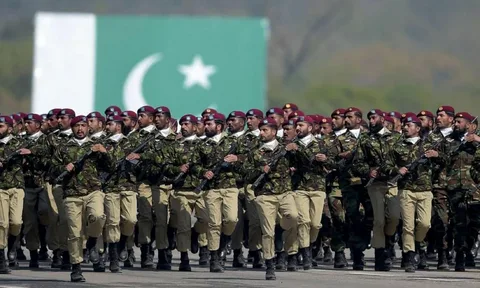The recent escalation between India and Pakistan has brought the region to a critical juncture. Both nations, armed with nuclear capabilities, have engaged in a series of military actions that have heightened global concerns. This article delves into the unfolding situation, examining the military responses, underlying causes, and potential implications for regional and global stability.
Understanding the Pakistan India Military Response
The term “Pakistan India Military Response” refers to the series of military actions and counteractions taken by both countries in the wake of escalating tensions. These responses have included missile strikes, drone attacks, and air defense operations, each contributing to the intensifying conflict.
India’s Military Actions
In early May 2025, India launched “Operation Sindoor,” a series of airstrikes targeting what it identified as terrorist infrastructure within Pakistan-administered Kashmir. The operation utilized advanced weaponry, including SCALP cruise missiles and AASM Hammer bombs, to strike nine locations over a span of 23 minutes. The Indian government described these strikes as “focused, measured, and non-escalatory,” aimed at dismantling terrorist networks responsible for attacks on Indian soil.
Pakistan’s Countermeasures
Pakistan responded by asserting its right to self-defense, claiming to have intercepted 25 Indian drones over major cities like Lahore and Karachi. Additionally, Pakistan reported shooting down several Indian fighter jets, including Rafales and MiG-29s. The Pakistani military emphasized that its actions were retaliatory and aimed at neutralizing perceived threats.
Root Causes of the Escalation
The current crisis is deeply rooted in the longstanding Kashmir dispute, which has been a flashpoint between India and Pakistan since 1947. The recent escalation was triggered by a terrorist attack in Pahalgam, Indian-administered Kashmir, on April 22, 2025, which resulted in the deaths of 28 civilians, mostly Hindu tourists. India attributed the attack to Pakistan-based militant groups, leading to heightened military preparedness and subsequent strikes.
International Reactions and Diplomatic Efforts
The international community has expressed grave concern over the escalating tensions. The United States, through diplomatic channels, has urged both nations to de-escalate and engage in dialogue. Secretary of State Marco Rubio emphasized the importance of restraint and the need to avoid a full-scale conflict.
Gulf states, particularly Saudi Arabia, have also played a pivotal role in mediating between the two countries. Saudi Foreign Minister Adel Al-Jubeir’s visit to India underscored the Kingdom’s commitment to regional stability and its efforts to facilitate dialogue between India and Pakistan.
Economic Implications of the Conflict
The ongoing conflict has significant economic ramifications for both nations. Increased military expenditures, potential sanctions, and disrupted trade routes could strain their economies. For instance, the suspension of the Indus Water Treaty by India and Pakistan’s withdrawal from the Shimla Agreement have raised concerns about the future of bilateral economic cooperation.
The Role of Technology in Modern Warfare
The current conflict highlights the increasing role of technology in modern warfare. Both nations have employed advanced weaponry, including drones, cruise missiles, and air defense systems, to achieve strategic objectives. The use of such technology not only enhances military capabilities but also raises questions about the future of warfare and the potential for unintended escalations.
Prospects for De-escalation
Despite the heightened tensions, both India and Pakistan have expressed a willingness to engage in dialogue. The presence of international mediators and the shared interest in regional stability provide a foundation for potential negotiations. However, the path to de-escalation will require mutual trust, transparency, and a commitment to addressing the underlying issues fueling the conflict.
Conclusion
The “Pakistan India Military Response” underscores the fragile nature of peace in the region and the complex interplay of historical grievances, national security concerns, and international diplomacy. As both nations navigate this challenging period, the global community watches closely, hoping for a resolution that ensures lasting peace and stability in South Asia.
For more detailed coverage on the recent developments, you can read the full article here: India sends warships towards Pakistan after more clashes.


